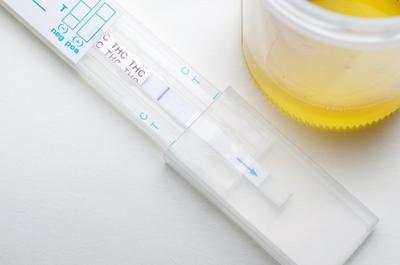How Breathalyzers Work
Last night, I administered a breathalyzer alcohol test on a pilot whose flight was about to take off.

Last night I was awoken by an airline calling me in to conduct a reasonable suspicion drug and alcohol test on a pilot whose flight was about to take off. I jumped in the car and got to the airport in 30 minutes. Immediately, I suspected he was on something. Something in his eyes told me he was off. And there was that smell. But hey, no need to guess. I don't go anywhere without my DOT approved Evidential Breath Testing device.
You see, alcohol in your breath - even a strong smell of vodka - doesn't mean you are drunk. There's even a condition known as acidosis which causes someone's breath to smell like alcohol, even though there's no alcohol present (typically, this occurs only in diabetics). As everyone knows, you are drunk when you have alcohol in your blood, not in your breath. So then, how exactly does breathing into a machine determine the alcohol levels in your blood?
Henry's Law
In 1803, a chemist named William Henry came up with a scientific law that said the amount of a volatile in a vapor is equal to the amount of a volatile in a liquid. Alcohol is a volatile, breath is a vapor, and blood is a liquid. So, pretty simply put, by Henry's law, if we can measure the amount of alcohol in your breath, it is a proxy measure for your blood alcohol.
In order to get the best possible reading, it's important that we get a "deep lung sample", since the deepest part of the lungs are closest to the blood in the stomach, where the alcohol is being metabolized. Therefore, professional breath alcohol devices won't register any results unless there is a minimum of 1200 cc's of air, to ensure it gets the air "furthest down". On the other hand, if we took exactly 1200 cc's from everyone, then the test would be unfairly biased against people with smaller lungs, since people with bigger lungs can pump out 1500, 1800, 2000 or more cc's. It's the end of the exhale that matters most, because that's the part closest to the stomach, regardless of your size. So, professional breathalyzers "know" when you have expelled most of your breath, and that's when they grab the breath sample that takes the official reading. In truth, the breathalyzer only needs 1 cc of air to get an accurate reading using a fuel cell sensor. But the device must to be designed to get the "right" 1 cc of air.
Mouth Alcohol
It happens all the time - someone blows a positive reading and they immediately tell me, "I just used mouthwash!" When that is indeed true (which is not too often!), they actually have nothing to worry about. The first reading from a breath alcohol device is known as a screening. If the screening is not negative (i.e., it shows alcohol), it "doesn't count". In these cases, we ask you to wait 15 minutes - without taking anything into your mouth - and then blow again. The second test is called a confirmation test. That's the one that counts.
Extensive studies have shown that if there is any alcohol in your mouth, such as the alcohol in Listerine, but it's not present in your body, then the mouth alcohol will dissolve completely in under 15 minutes. I have done the study myself. I test myself first and confirm that I am at 0.000 BAC. Then I rinse with a little mouthwash, blow into the device, and it reads as if I am stone cold drunk. I wait 2 minutes and blow again: still pretty drunk. I wait 2 more minutes: the numbers are going down. I wait 5 more minutes: it's pretty much completely gone. After 15 minutes total, I am at 0.000 BAC. Negative. Proof of Concept.
Blood Alcohol
When the alcohol is actually in your blood, as opposed to just in your mouth, it tends to go down by about .005 during the 15 minute wait period. Occasionally, the reading actually goes up during the wait period, even though the person is not drinking. Why? This is what's known as an "upswing". This typically happens when hard alcohol is consumed rather quickly, and it hasn't had a chance yet to get into the blood. If you're a drinker, maybe you have experienced this. You drink a lot, very quickly, and feel fine. And then, all of sudden, it's like you get knocked in the back of head. That's an upswing, in action.
Drinking and Flying
So, back to last night. The first blow came back positive. It was over .100. The pilot had driven to the airport just a couple hours earlier, and he told me hadn't had a drink since midday. So, if that was true, he either just swished Listerine or he had driven to work drunk. Fifteen minutes wait period, and as always, it is painstaking. He gradually began to accept that the consequences of his actions. He used the words "career ending" more than once. He confessed to having had vodka earlier in the day, but hecouldn't understand why it would still be in his system. He blew again. It went even higher. Positive test, lights out.
In these moments, as a breath alcohol technician, I have the unique and fleeting opportunity to give some advice. Usually, the person is feeling very sorry for themselves, or trying to bribe me, or both. In this case, I explained to the pilot that he was a lucky guy. He made it to work without killing anyone, and we just prevented him from flying under the influence of a sizable amount of alcohol. Now, accident free, he had a chance to change his life around. It's not going to be easy for him to make the necessary changes, but it sure is better to get caught on a reasonable suspicion test than it is to get caught after causing an accident. He skirted the physical consequences, but now he must face up to the emotional ones. We don't know how he'll be handling it, but we do know one thing for sure - we got a dangerous pilot out of the cockpit.




